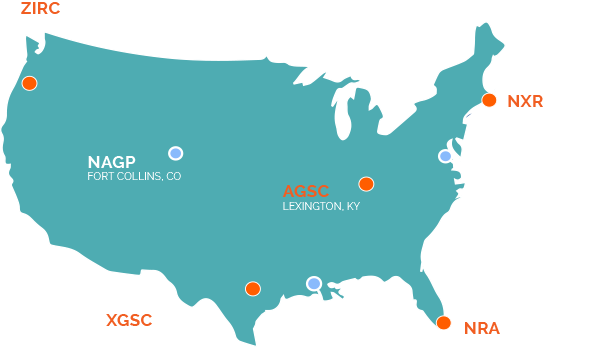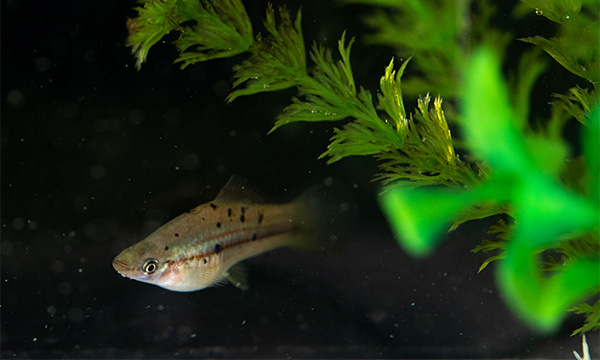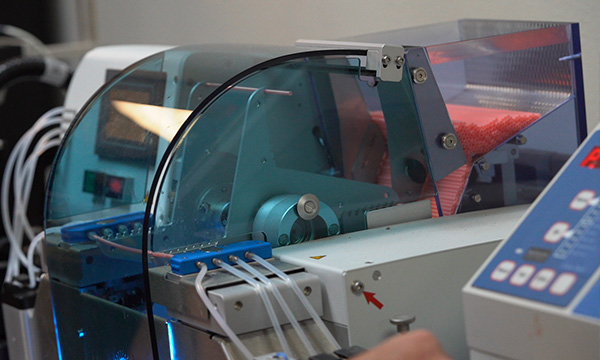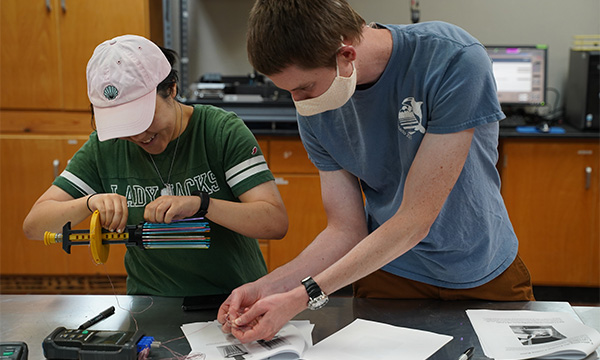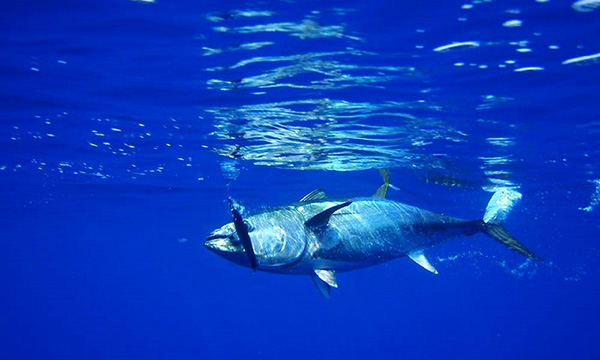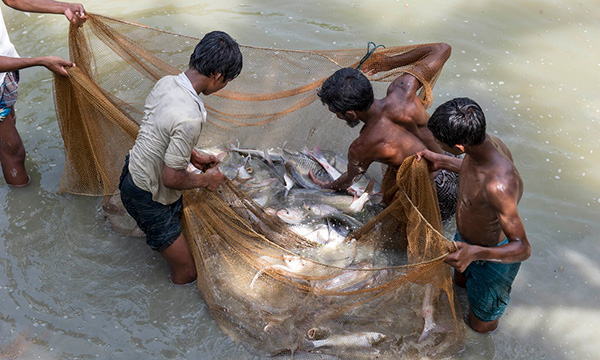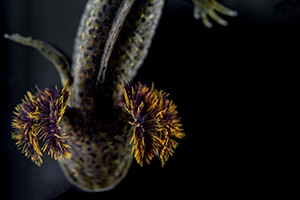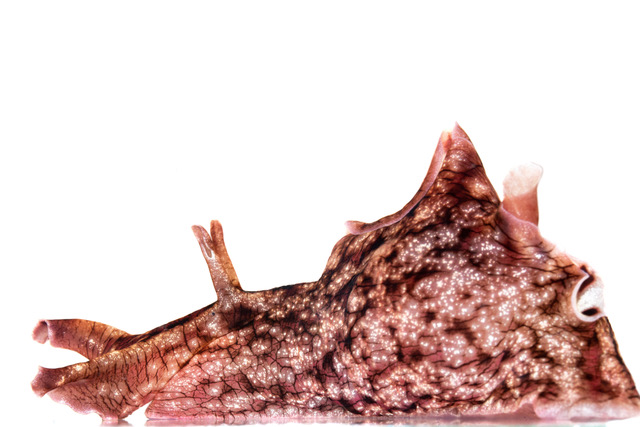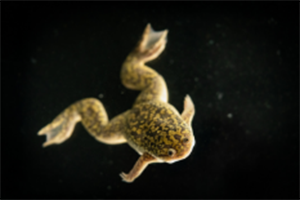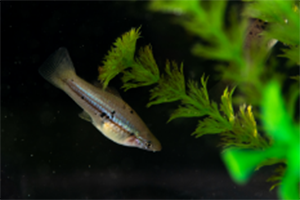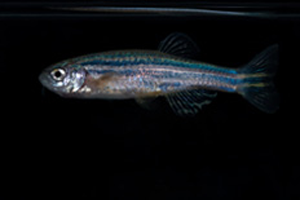Outreach & Communities
Despite massive diversity in species, scope, and scale all aquatic user communities need to characterize, protect, distribute, and utilize genetic resources. Our team works as partners to develop tailored solutions with each community.
The AGGRC, though its network development and outreach program, strives to facilitate the integration of communities around genetic resources preservation and utilization. The program is based on the establishment of a centralized, comprehensive unit or Hub, for repository development. AGGRC provides information and support in pathway development, from sample collection to documentation for repositories. An integrated approach will lead to a greater reproducibility and integration in the management of genetic resources for each of the target communities.
To realize the full potential of germplasm repositories, active participation of all stakeholders is necessary. This program is oriented towards the interaction with different genetic resources users’ communities, to explore their needs and possible solutions, and to create an environment where the exchange between the users inside and out of their own community is facilitated. As part of the development of these interactions, we envision open learning channels for our different users’ communities.
The AGGRC continuously develop and deliver community services, training programs, instructional videos, open-source hardware, device information, databasing templates and beta testing programs. Training curriculum is delivered at the center, at external locations, or over the internet, depending on the users’ needs.
Outreach Capabilities
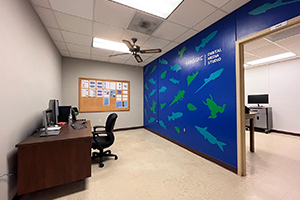
Digital Media Studio
Clear illustration of ideas is crucial to communicating complex scientific or technical information. The Digital Media Studio is a major part of the AGGRC’s outreach strategy and projects by providing photo and video content, as well as graphic design expertise. The studio is also a flexible space that allows scientists and engineers to train with content creation tools and get exposure to methods that can enhance their communication capabilities.
Audio Recording Studio
To support our visual communication efforts, the Digital Media Studio added a sound-proofed recording space. This will allow team members to add clean, professional quality voice-overs to instructional and informational videos.
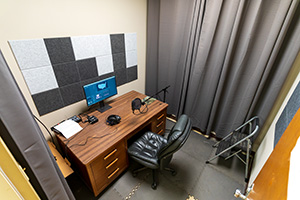
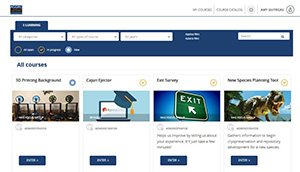
Learning Management System
The AGGRC uses a learning management system (LMS) to distribute tutorials and other information online. The primary benefit of this format over a simple email or PDF guide is the ability to evaluate comprehension. By testing how well information was conveyed, guides can be continually improved.
Training and Teaching
Video and print guides are created for many of the devices and processes that have been developed at the AGGRC. The Digital Media Studio tools allow the AGGRC to create detailed tutorials to train students or share with collaborators around the world.


On-Site Cryopreservation & Demonstration
A different repository model may involve traveling to various farm sites to freeze samples as opposed to all sample being process in a central repository facility. For this mobile repository model to work, on-site cryopreservation capabilities must exist. The AGGRC has built a mobile cryopreservation laboratory capable of traveling to various locations, and reliably freezing and transporting thousands of samples. This mobile laboratory also serves as a demonstration tool to engage members of the aquaculture industry and show the possibilities of a commercial-scale repository.
Spotlight Species
Ambystoma
Ambystoma mexicanum, otherwise known as the axolotl, is a salamander native to the freshwater Lake Xochimilco in Mexico. Due to water pollution from nearby Mexico City, as well as drought and introduction of invasive species, axolotl numbers have dramatically declined, with an IUCN red list classification of Critically Endangered. Despite this, the ease of husbandry and breeding, as well as it’s regenerative abilities, has made the axolotl a popular biomedical model organism, used routinely to investigate heart defects and treatments for spinal cord and limb injuries.
Aplysia
Comprised of nine ganglia (bundles of neuronal bodies) the Aplysia nervous system is well characterized and mapped. This means that researchers know where each neuron travels to in the body and the bodily functions that are controlled. You might think of this level of understanding like knowing which light switch turns on a certain light and knowing exactly where the electrical wires travel through the walls.
Xenopus
Xenopus laevis and X. tropicalis are widely used in laboratories worldwide as tools to investigate both normal and disease-state biochemistry, genetics, cell biology and developmental biology with close to 15,000 studies published every year using these species.
Xiphophorus
Xiphophorus fishes have been used as a vertebrate experimental model for fundamental biomedical research for over 80 years. Xiphophorus is an important model used by scientists worldwide to study cancers, such as Melanoma. In addition, Xiphophorus fishes are actively used in many diverse fields of study including; evolution, behavior, basic physiology, comparative biochemistry and genomics, sex determination, development, endocrinology, ethology and behavioral ecology, toxicology, parasitology, and immunology. The Xiphophorus genus is represented by 27 species of new world, live-bearing fishes that are popular in the aquaria trade, commonly called “platyfish” or “swordtails”. The unique value of Xiphophorus lies in the species richness (27 taxa) and the morphological variation among the species having original collection sites ranging from northern Mexico, south across the isthmus into Guatemala and Belize. Although several valuable and informative oviparous aquaria fish research models are available (e.g., medaka, Fundulus, zebrafish, etc.) the unique biology of Xiphophorus as new world, live-bearing fishes capable of fertile interspecies hybridization between well-characterized and inbred lines, sets Xiphophorus fishes apart from all others.
Zebrafish
Zebrafish (Danio rerio) is a tropical and subtropical cyprinid species with origins ranging from Pakistan, India, Bangladesh, Nepal, and Myanmar. They have adapted to a variety of different habitats ranging from rivers, small streams, channels, stagnant or slow-moving pools. Zebrafish are popular biomedical research tools used by > 1,500 laboratories worldwide. For use in genetic studies as an animal model, zebrafish was initially introduced by Streisinger and colleagues in the early 1980s. Since then, > 50,00 mutation lines have been established. The high level of genome structure shared between zebrafish and humans (~70% of human genes have at least one obvious zebrafish ortholog, compared to 80% of human genes with mouse orthologs) has facilitated the use of zebrafish for understanding human genetic diseases. Zebrafish possess several advantages over rodent models in the study of vertebrate development and disease. These include high fecundity (hundreds of embryos in a single clutch), optical clarity of the developing embryo, low maintenance cost, and short reproduction cycles.
